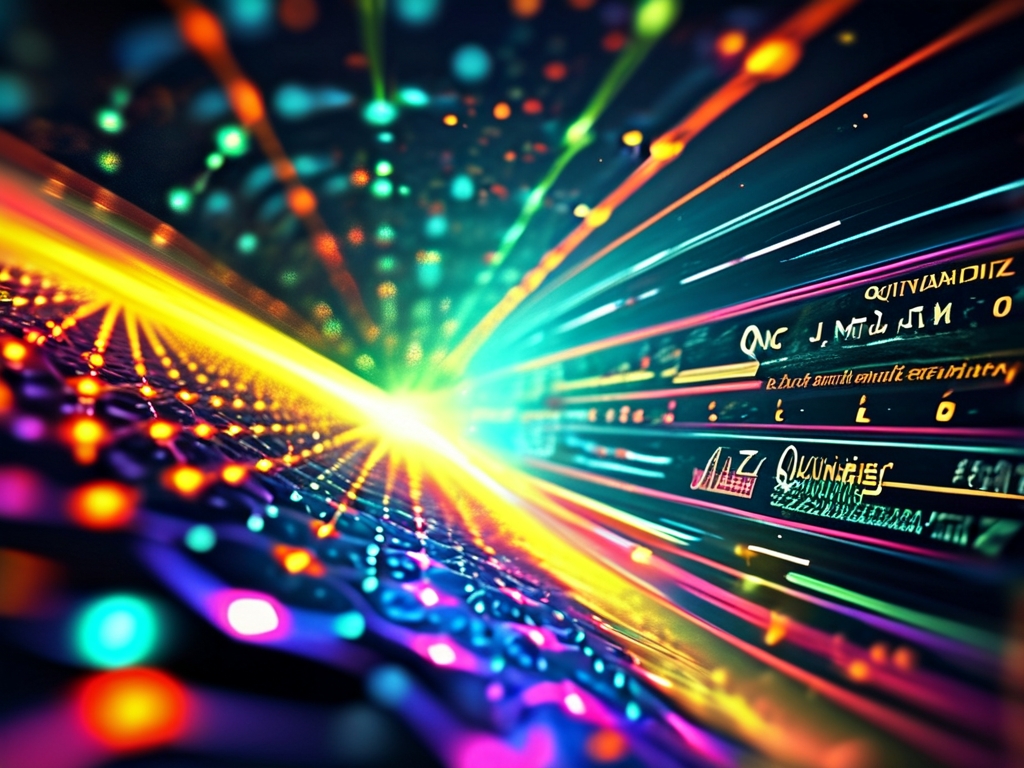Quantum information technology (QIT) represents one of the most revolutionary frontiers in modern science, combining quantum mechanics with information theory to enable breakthroughs in computing, cryptography, and communication. However, conveying its complex principles to diverse audiences—from students to policymakers—remains a significant challenge. This is where visual tools like poster graphics play a pivotal role. A well-designed poster about quantum information technology does more than present data; it bridges abstract concepts and public understanding through strategic visual storytelling.
The Power of Visual Communication in QIT
Quantum phenomena such as superposition, entanglement, and quantum tunneling defy classical intuition. Text-heavy explanations often fail to engage non-specialists, but visual elements can simplify these ideas. For instance:
- Color-Coded Qubits: Posters using contrasting colors to represent qubit states (e.g., blue for |0⟩ and red for |1⟩) make quantum superposition visually intuitive.
- Entanglement Diagrams: Flowcharts or interconnected nodes can illustrate how entangled particles maintain correlations across distances.
- Timeline Visualizations: Infographics showing the evolution of QIT milestones (e.g., Shor's algorithm, quantum supremacy experiments) contextualize its rapid progress.
Studies show that humans process visual information 60,000 times faster than text. For QIT, this efficiency is critical. A poster targeting high school students, for example, might use cartoon-style illustrations of quantum computers alongside relatable analogies (e.g., "Imagine a library where you read all books at once"). Conversely, academic conference posters might prioritize circuit diagrams and error-correction schematics for experts.
Design Principles for Effective QIT Posters
Creating an impactful quantum technology poster requires balancing aesthetics with scientific rigor. Key considerations include:
- Simplicity vs. Depth: Avoid clutter while ensuring technical accuracy. Layered designs—such as foldable sections or QR codes linking to detailed papers—can cater to multiple audience levels.
- Color Psychology: Cool tones (blue, purple) evoke futuristic themes, while warm accents (orange, yellow) highlight critical data points.
- Typography: Sans-serif fonts enhance readability, especially for equations like Schrödinger's formula (iψ⟩ = H|ψ⟩).
A 2022 case study from MIT demonstrated this balance. Their poster series on quantum cryptography used minimalist icons (padlocks, photons) alongside brief bullet points explaining quantum key distribution (QKD). Attendees reported a 40% increase in comprehension compared to text-only handouts.
Case Study: Quantum Computing Poster for Public Outreach
In 2023, the European Quantum Flagship initiative launched a poster campaign titled "Quantum Leap: Beyond Binary." Designed for science museums, the posters featured:
- A central holographic element showing a qubit transitioning between states.
- Side panels comparing classical vs. quantum processing speeds using racecar metaphors.
- Interactive elements like augmented reality (AR) triggers that revealed 3D models of quantum processors when scanned via smartphone.
Post-survey data revealed that 78% of viewers could explain basic QIT concepts after engaging with the posters, underscoring the value of multisensory design.
Challenges and Innovations
Despite their potential, QIT posters face unique hurdles:

- Dynamic Content: Quantum systems are probabilistic, but static posters struggle to represent this. Some designers now incorporate lenticular printing to create "moving" visuals of qubit interactions.
- Cultural Adaptation: Symbols like Bloch spheres may confuse audiences in regions with limited STEM infrastructure. Localized designs using culturally resonant metaphors (e.g., weaving patterns for entanglement in textile-rich communities) are gaining traction.
- Ethical Visuals: As QIT advances military and surveillance applications, posters must navigate ethical messaging. Neutral palettes and focus on humanitarian uses (e.g., quantum-secured medical data) help maintain trust.
The Future of QIT Visual Tools
Emerging technologies are reshaping poster design:

- AI-Generated Graphics: Tools like DALL-E now create custom quantum circuit images from text prompts, accelerating design workflows.
- Dynamic Posters: E-ink displays embedded in posters can update content in real-time, showcasing live quantum experiment results.
- Virtual Reality Integration: QR codes linking to VR simulations allow users to "enter" a quantum computer’s architecture, transforming passive viewing into immersive learning.
Poster graphics are not mere supplements to quantum information technology discourse—they are essential tools for democratizing knowledge. As QIT reshapes industries from cybersecurity to drug discovery, effective visual communication ensures its benefits and risks are understood globally. By embracing innovative design strategies, educators and researchers can turn abstract equations into compelling narratives, inspiring the next generation of quantum pioneers.





